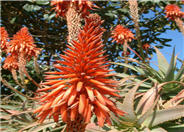
Common name:Tree Aloe
Botanical name:Aloe arborescens
This shrub is large, full of branches, and produces deep orange blooms. The flowers produce a nectar that is attractive to many different birds and the plant is grown all over the world.
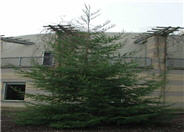
Common name:Coast Redwood
Botanical name:Sequoia sempervirens
This fast-growing, aromatic tree has soft, dark green foliage with long needles appearing in flat sprays and brown, barrel-shaped cones that appear after 1 year. Its soft, red-brown bark is fiberous and furrowed. Particularly after mechanical damage, this tree will stump sprout to form new, young trees around the stump. Avoid planting in areas of high foot traffic.
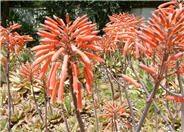
Common name:Shrimp Pink Aloe
Botanical name:Aloe saponaria
This succulent plant will grow about 2' high and has large, greenish/white leaves with orange, pink, and red flowers that bloom in spring and fall.
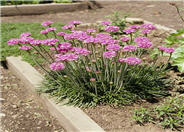
Common name:Sea Pink, Common Thrift
Botanical name:Armeria maritima
This clumping, grass-like perennial is native to many areas, including coastal California. Its flowers range from deep rose pink through white. -Monterey Bay Nursery
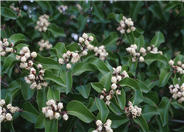
Common name:Sugar Bush
Botanical name:Rhus ovata
Dense rounded evergreen shrub growing 8-15 ft. tall & wide with creamy flowers between March & May. Small red fruit. Grows well in inland areas and is drought tolerant. Native dry mountain slopes 3-5000' Az, S. Calif into Baja. Leathery rich dark green foliage. Needs additional water in low desert every 2 weeks or afternoon shade. Well drained site. Susc. to verticillium wilt in wet areas.
| Designer: 2660 E Lake Ave., Watsonville | Sphere within a Circle |
Photographer: GardenSoft |
Soils and Compost:
Practice grass-cycling by leaving short grass clippings on lawns after mowing, so that nutrients and organic matter are returned to the soil.
Water Saving Tip:
Check your irrigation systems at least once per month (or after each mowing).
Monitor each cycle to identify obvious problems and to confirm that all of the components are functioning properly.
Contact your water agency for assistance.
Integrated Pest Management:
Remove irrigation water and fertilizer from areas where you don't want weeds to grow.
